Who dares to drive more than 3.000 kilometers on a scooter through East Africa? Visiting mountain gorillas? Scooter safaris (does this word exist?) in five National parks† To admire lions, buffaloes, hippos and elephants up close, among other things. My name is Eric and I like to travel around on a scooter. Read here part 18 of the unique report of an amazing scooter adventure Uganda, Rwanda en Kenya† In this part I visit Sipi Falls, one of the most beautiful waterfalls in Uganda and I continue my journey to Kenya.
Uganda has stolen our hearts more than once and as far as we are concerned it is a travel destination that belongs on the bucket list of every world traveler. Find out why Uganda is called the pearl of Africa.
A trip through Uganda will be one you will never forget. Spot the tree-climbing lions, meet thousands of elephants, come face to face with Mountain Gorillas in the jungle and get to know the beautiful culture.
A tired arrival in Sipi
It is half past eight when I leave the main road and turn towards Sipi Falls. It is still 13 kilometers to Sipi. Despite it being pitch dark, it drives fine on the asphalt road. I can easily cover those 13 kilometers in half an hour. Then I can get something to eat in a restaurant if all goes well.
One thing I didn't take into account. The falls are at an altitude of almost 2.000 meters, while I am now driving at an altitude of 1.000 meters. After five kilometers my scooter starts to sputter. It only idles at idle, because it can no longer handle the rise in the road. Depending on the ascent, I progress by staying on the scooter and stepping or stepping off and walking. The latter requires a great deal of effort. If it is flat, the scooter will start very slowly.
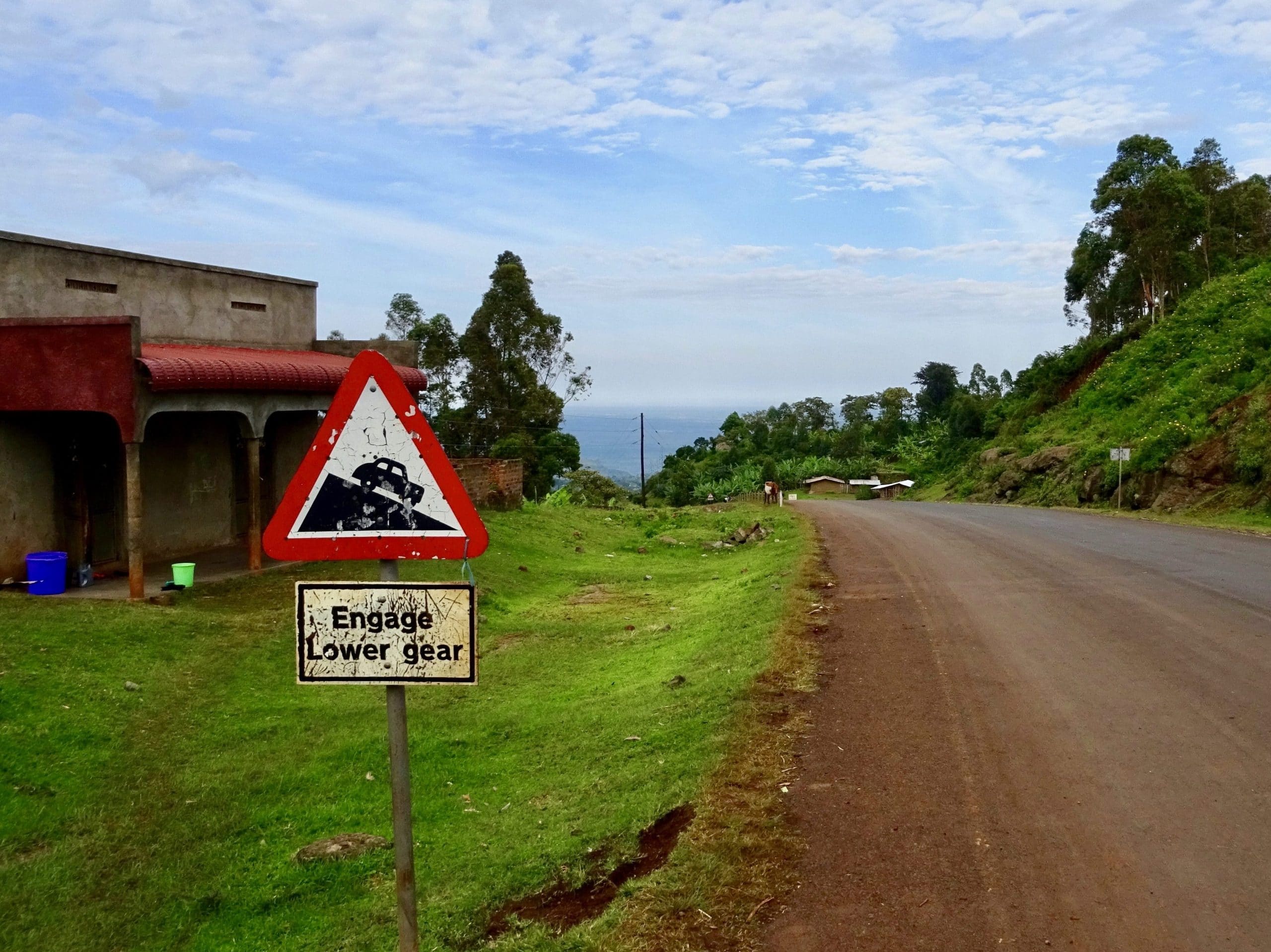
Instead of half an hour, the torture lasts more than an hour and a half. Completely exhausted, I reach an extinct Sipi. “Sir, most guesthouses and hotels are closed. It is low season because of the rainfall. Most of the time Crown's Nest stays open, but I don't know if anyone is still there at ten o'clock.'
One thing becomes immediately clear to me when I come off the road into a mud bath. It has rained quite a bit. There is no one to be seen at Crown's Nest. Two hotels later I push my scooter along the blubber to Sipi Falls Resort. There's a light. There is room in a spacious banda. The restaurant is closed, but the receptionist will arrange a savory omelette as an alternative. Then I fall asleep exhausted.
The spectacular waterfalls of Sipi
Sipi is little more than a row of houses, shops and a few guesthouses on either side of the main road. The falls are one kilometer away. I'm in luck with the Sipi Falls Resort. The banda offers comfort and an open air shower. In the distance I even hear the wild roar of the 100 meter high waterfall.
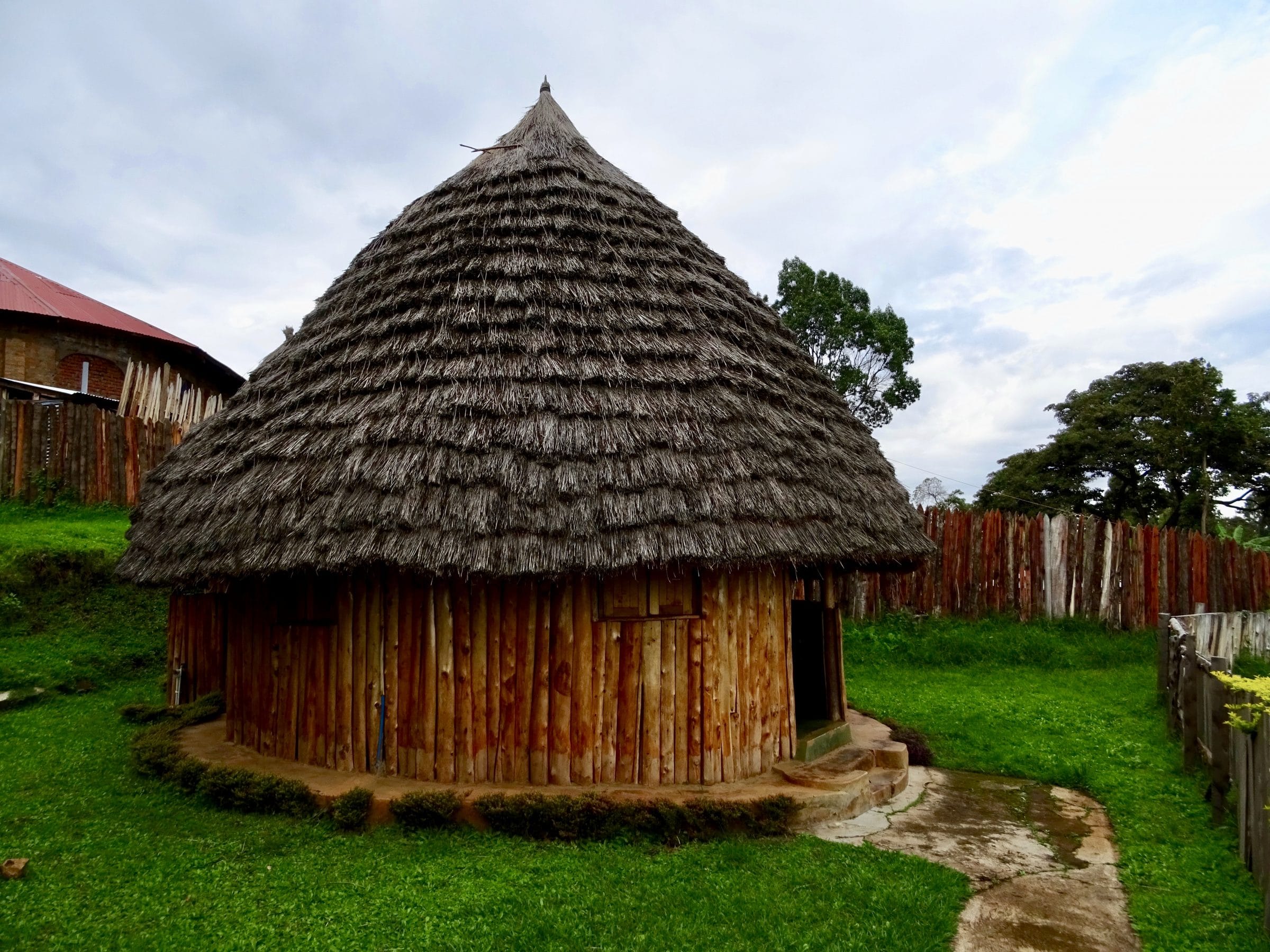
After breakfast I settle down on the panorama terrace in the midst of a few blue monkeys, who are sitting quietly on a rock. In the meantime I enjoy the spectacular view of the Sipi Falls.
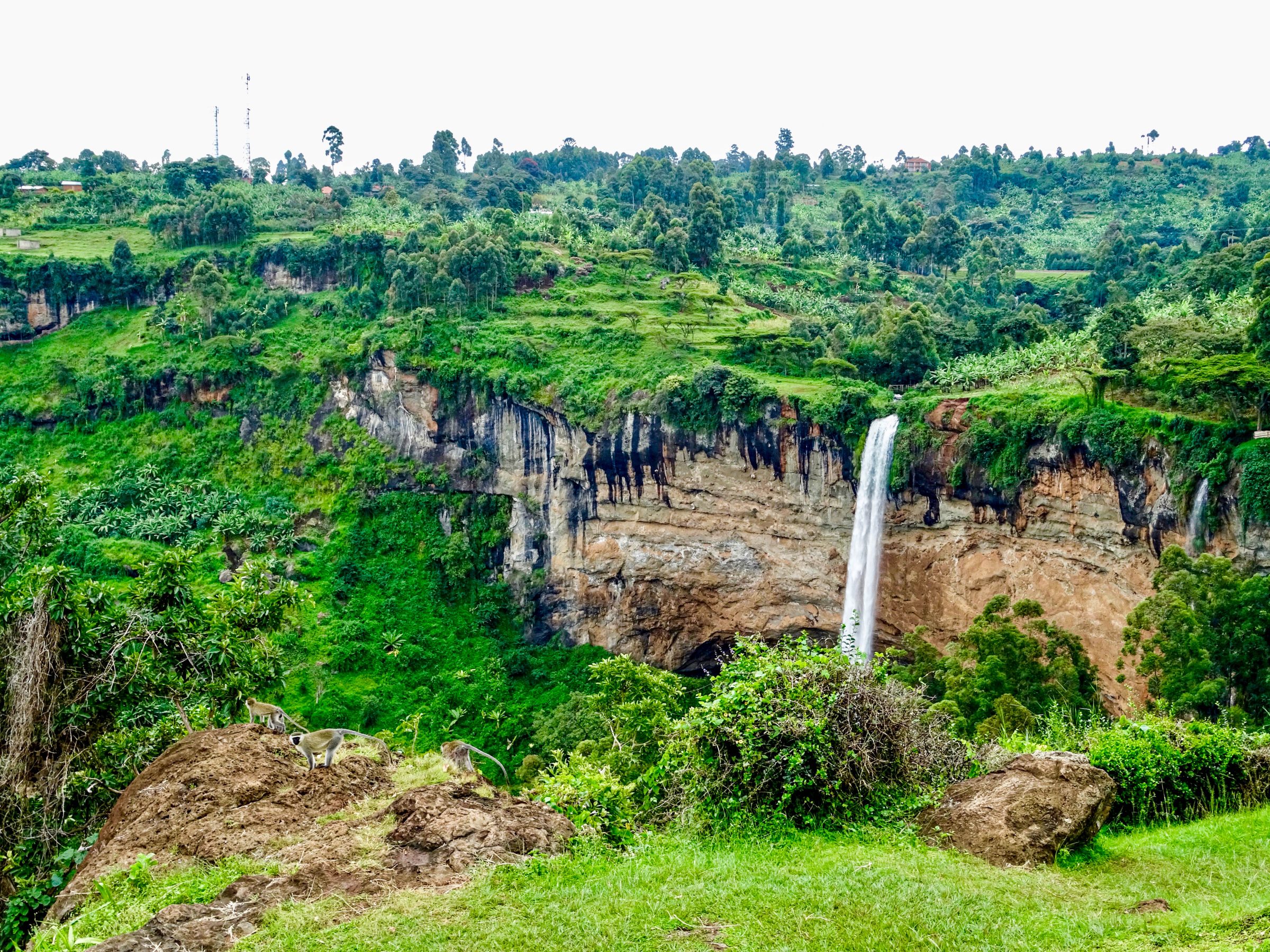
Then it's time to see the falls up close. Together with a guide I make my way through the mud and the dense vegetation. After half an hour we are under a rocky outcrop over which a waterfall falls violently. Soaked but satisfied I then return to Sipi.
Descent to Mbale and Tororo
At about eleven o'clock I start the scooter for a long ride that should take me today via Mbale and Tororo in Uganda near Kakamega in Kenya. The distance is about 170 kilometers. This time the journey goes downhill first. It is sunny and clear and so I look for miles over the vast Karamojong plain.
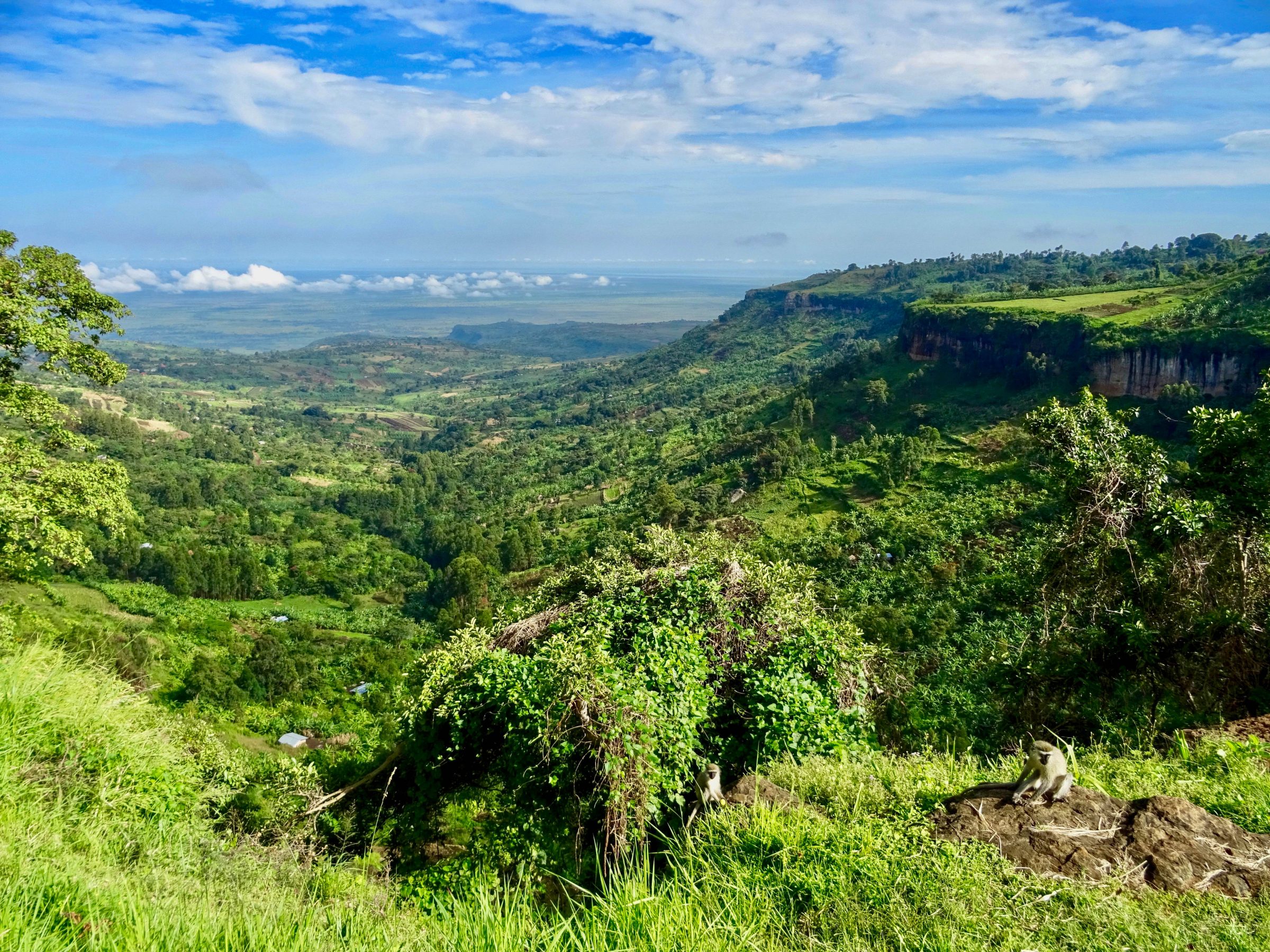
Good roads and no rain. I cover the 50 km from Sipi to Mbale in just over an hour. Mbale is a city with about 100.000 inhabitants and there is not much to see. Via Mbale I want to go to Tororo and cross the border to Malaba in Kenya† That is a bit of a detour in terms of distance, but that way I avoid the extremely busy border crossing at Busia. The border at Busia is used by virtually all freight traffic that commutes between the Kenyan port of Mombasa and Kampala and the Ugandan hinterland.
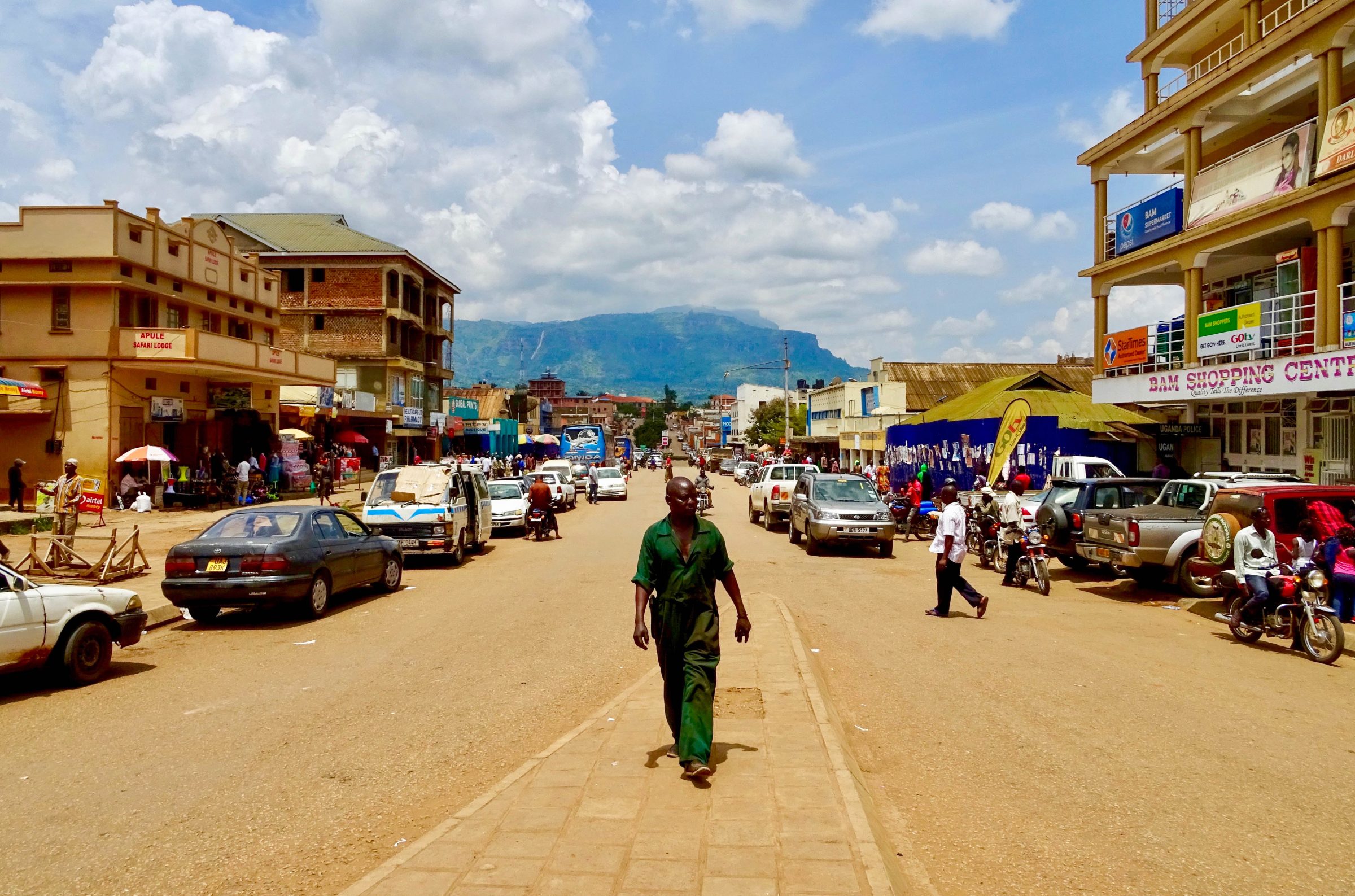
The last place in Uganda before the border is Tororo. You simply cannot miss the city, because the Tororo rock protrudes 200 meters above it. The border with Kenya is a few kilometers away.
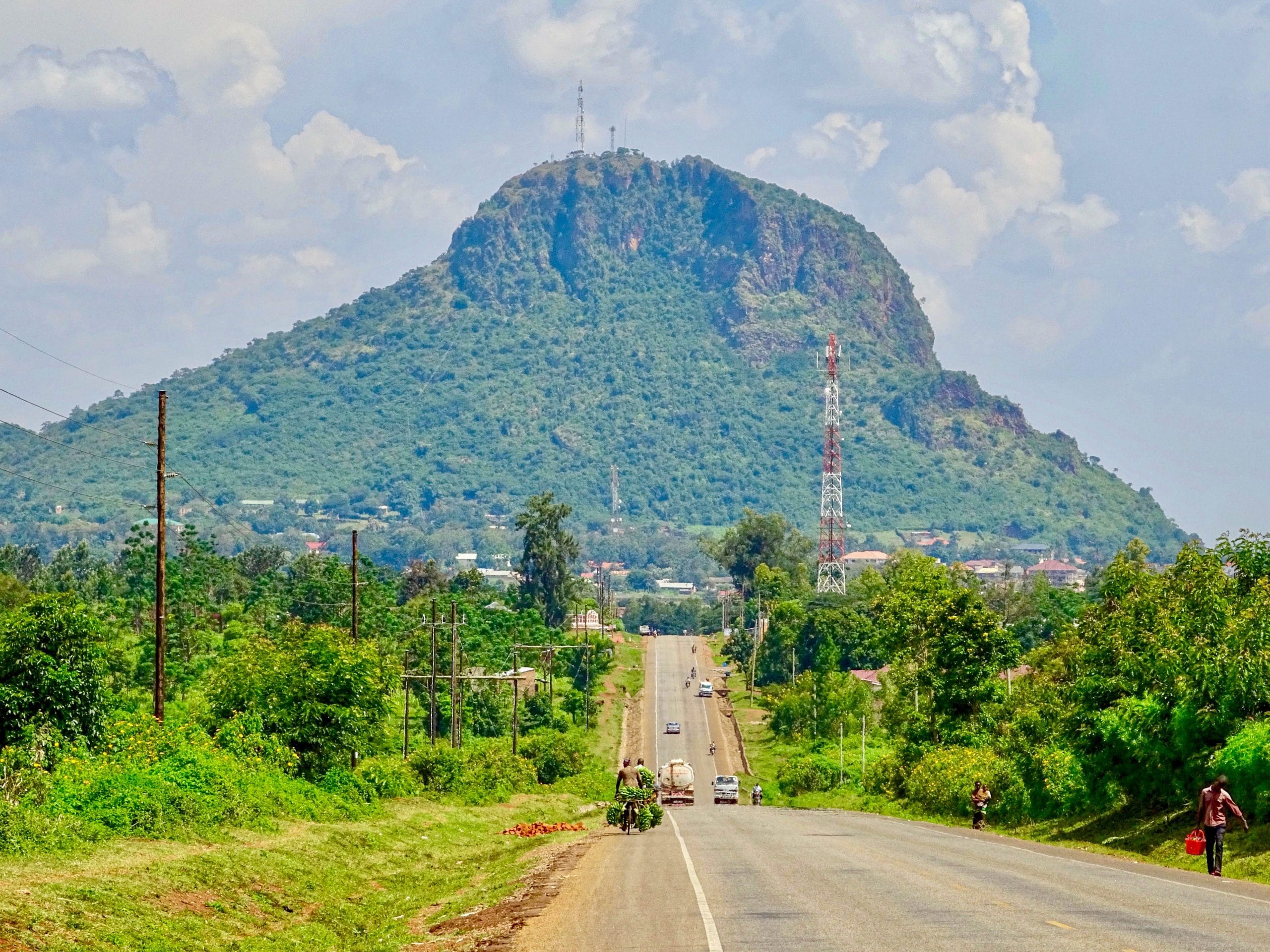
Welcome to Kenya
"Karibu," says the Kenyan border guard. "Asante sana," I answer. So that's how fast it goes. Barely five minutes after a Ugandan colleague stamped my passport, she is now doing this. What the East Africa visa is not good for. (The East Africa multiple entry visa is valid for 90 days and can be used in Kenya, Uganda and Rwanda).
In fact, there is hardly anything to report about the remaining 60 kilometers. The roads in this part of Kenya are fine. Every now and then they work on the road, but it doesn't lead to much delay. Around 7 am I drive through Webuye and at XNUMX:XNUMX am I follow a sign to the Malava hotel.
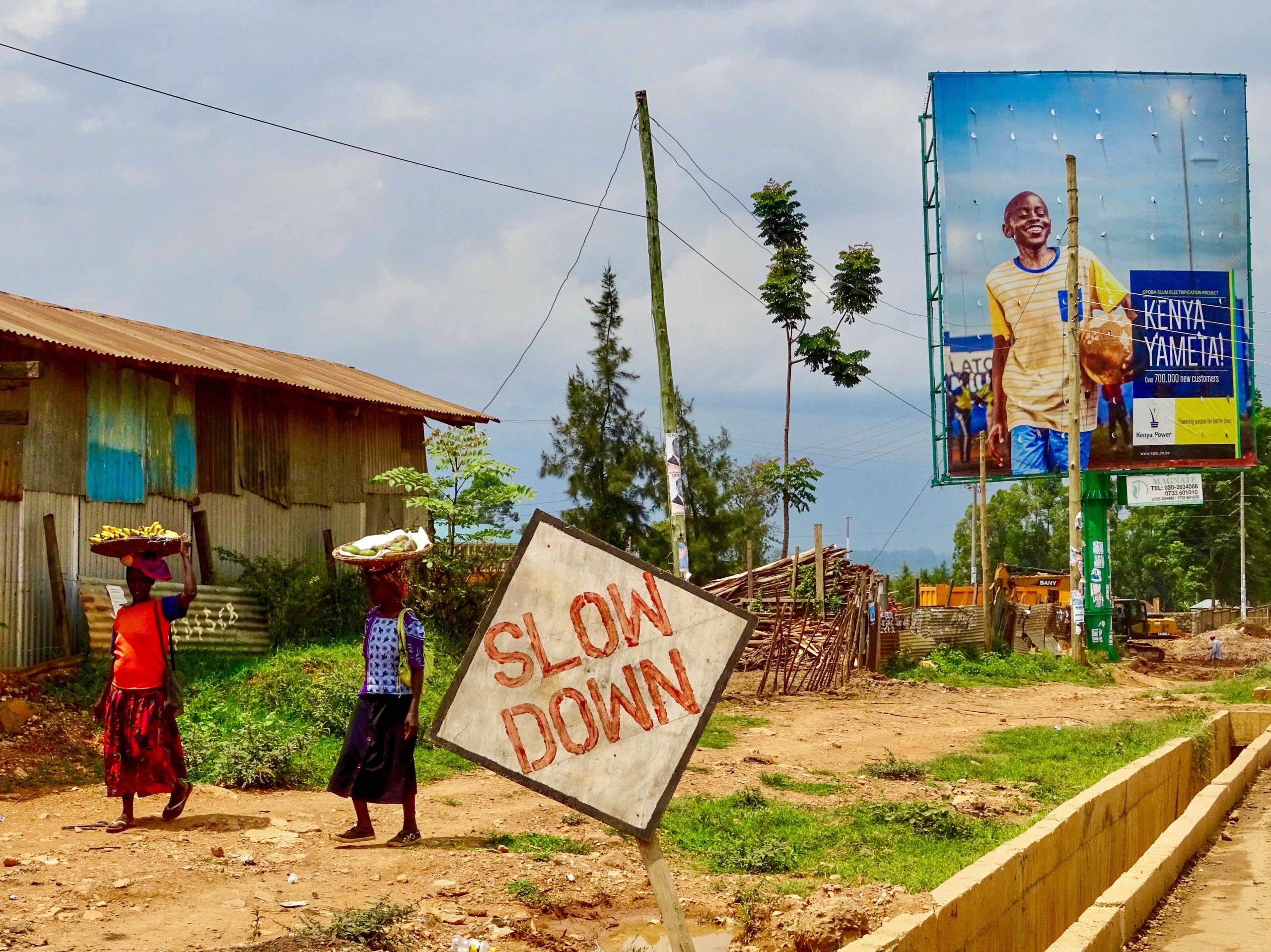
Scooter cleaning and a visit to the famous Lubao markt market
In the early morning I drive around Malava looking for a launderette for my scooter. He needs another cleaning after all that mud in Sipi. The pressure washer on it and it shines as usual afterwards.
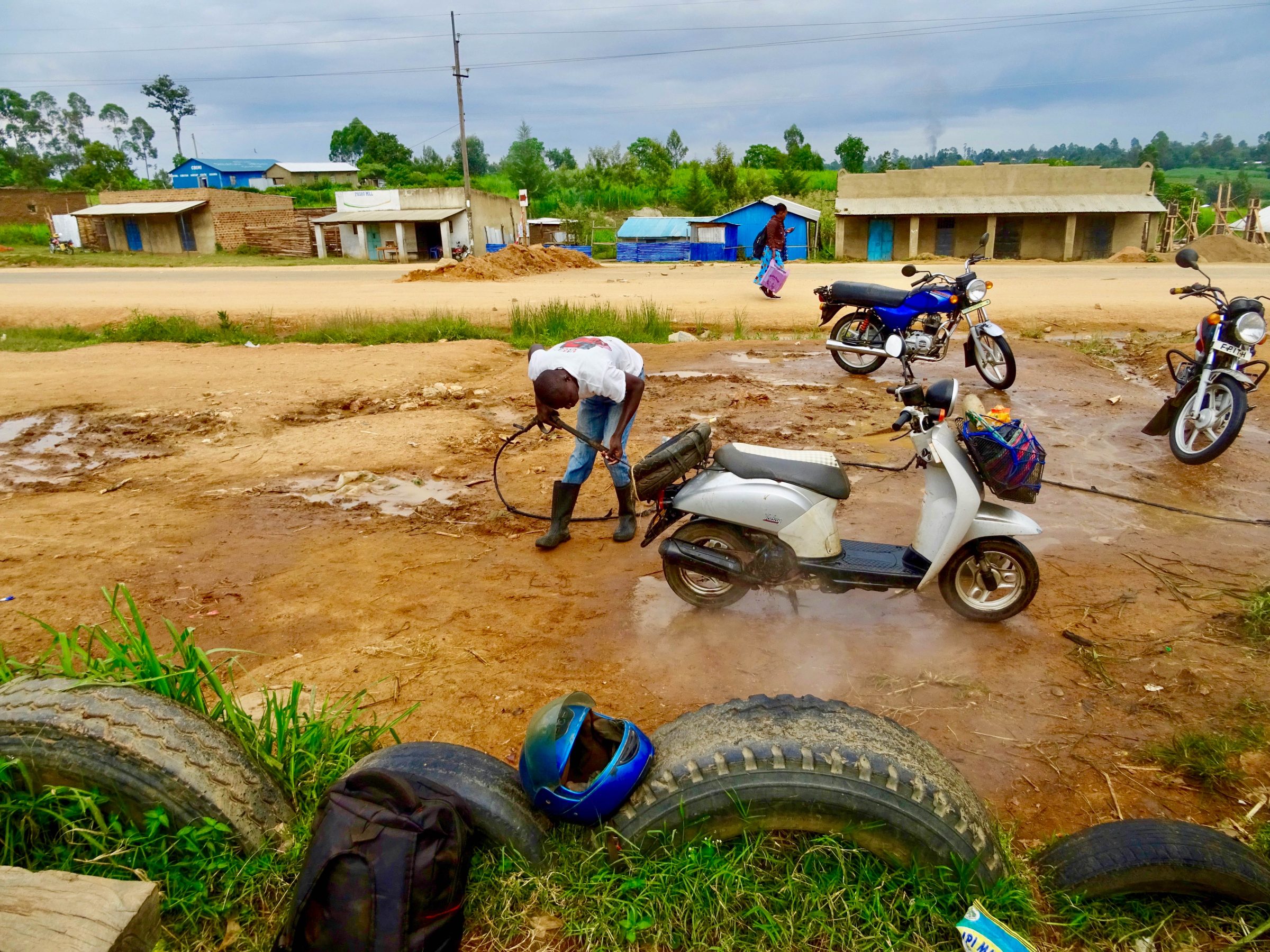
Back at the hotel I get the request from the owner to pose for a few photos. 'You are the first mzungu ever to visit my hotel on a pikipiki (scooter). Huh no, in fact: you are the very first person, because I have never welcomed anyone here on a pikipiki.'
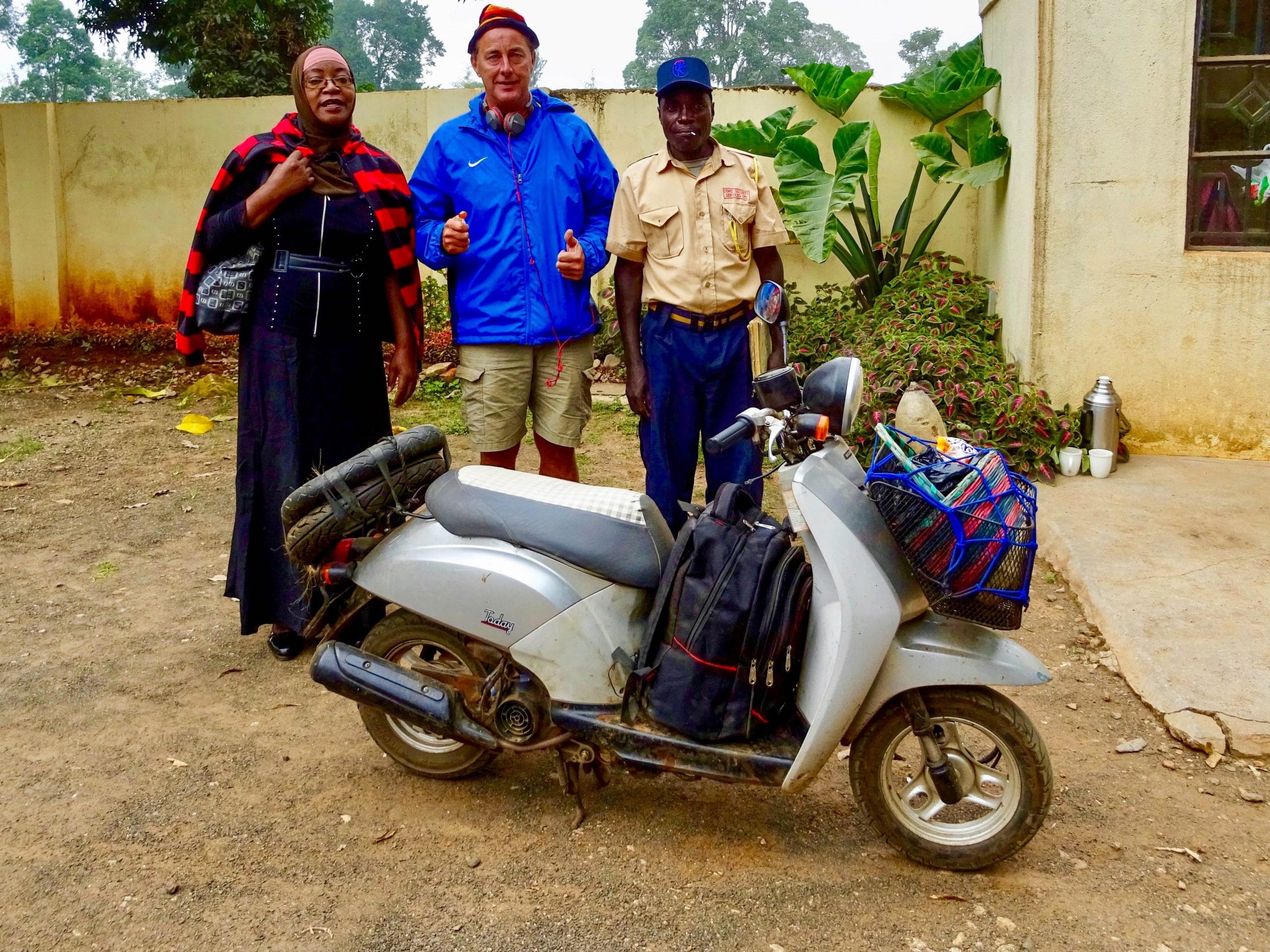
Visiting the famous Lubao . market
The owner asks where I am driving today. "I hope to reach Kericho," I answer. 'That should work, because the roads are good. Be careful with Kisumu. It has been very unsettled since the election. Stay on the bypass and avoid the center. And I also have a tip for the road: in about ten kilometers you will pass Lubao. It's Thursday and that means it's market day in Lubao. You can't miss it, because thousands of people flock to it. There really is a lot for sale.'
The Lubao market is a special happening. As always, it's the women who sell their wares loudly. However, in a fenced area behind it, men determine the event. It is a phenomenon that The Netherlands has long since died out: the cattle market.
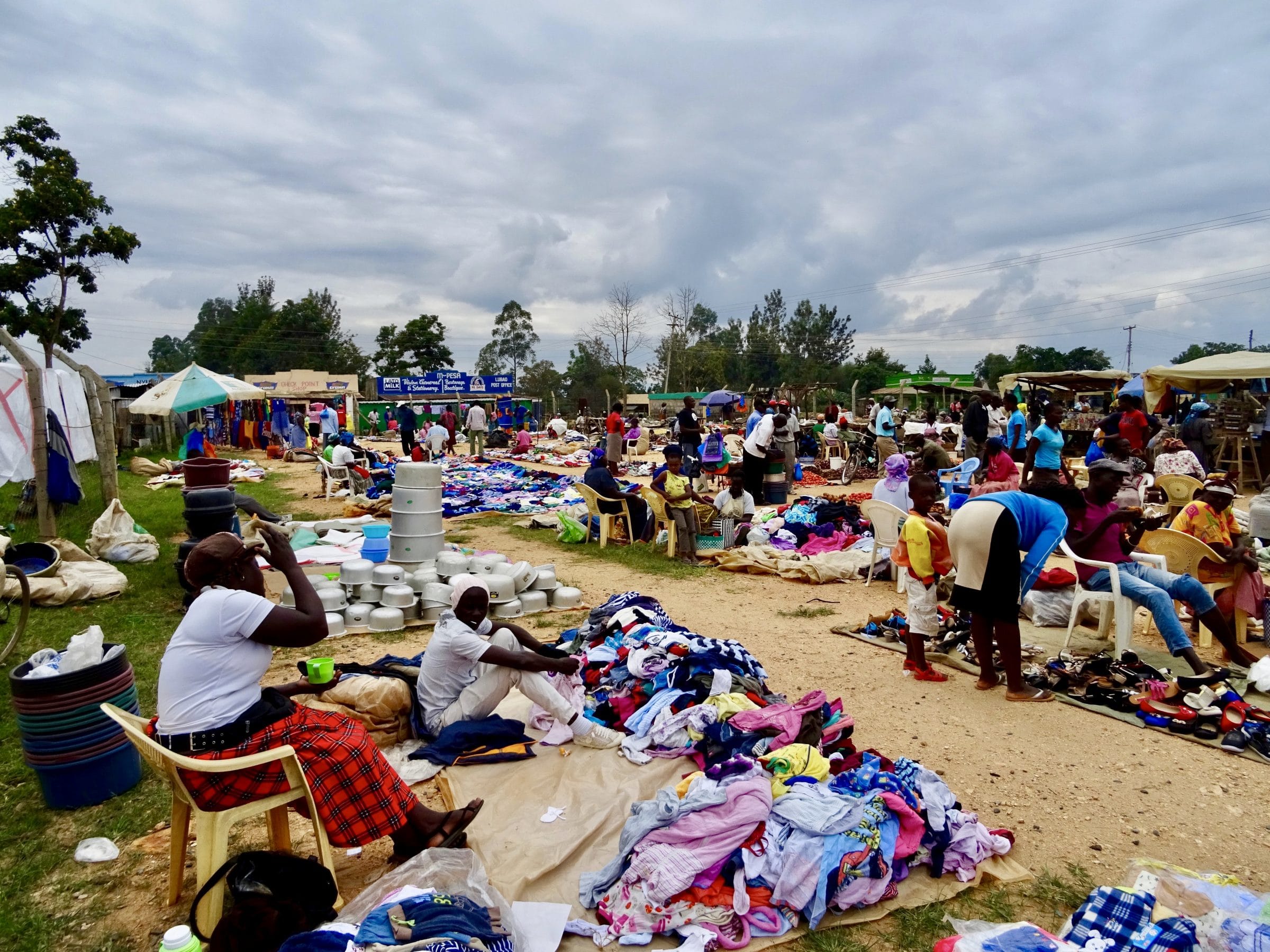
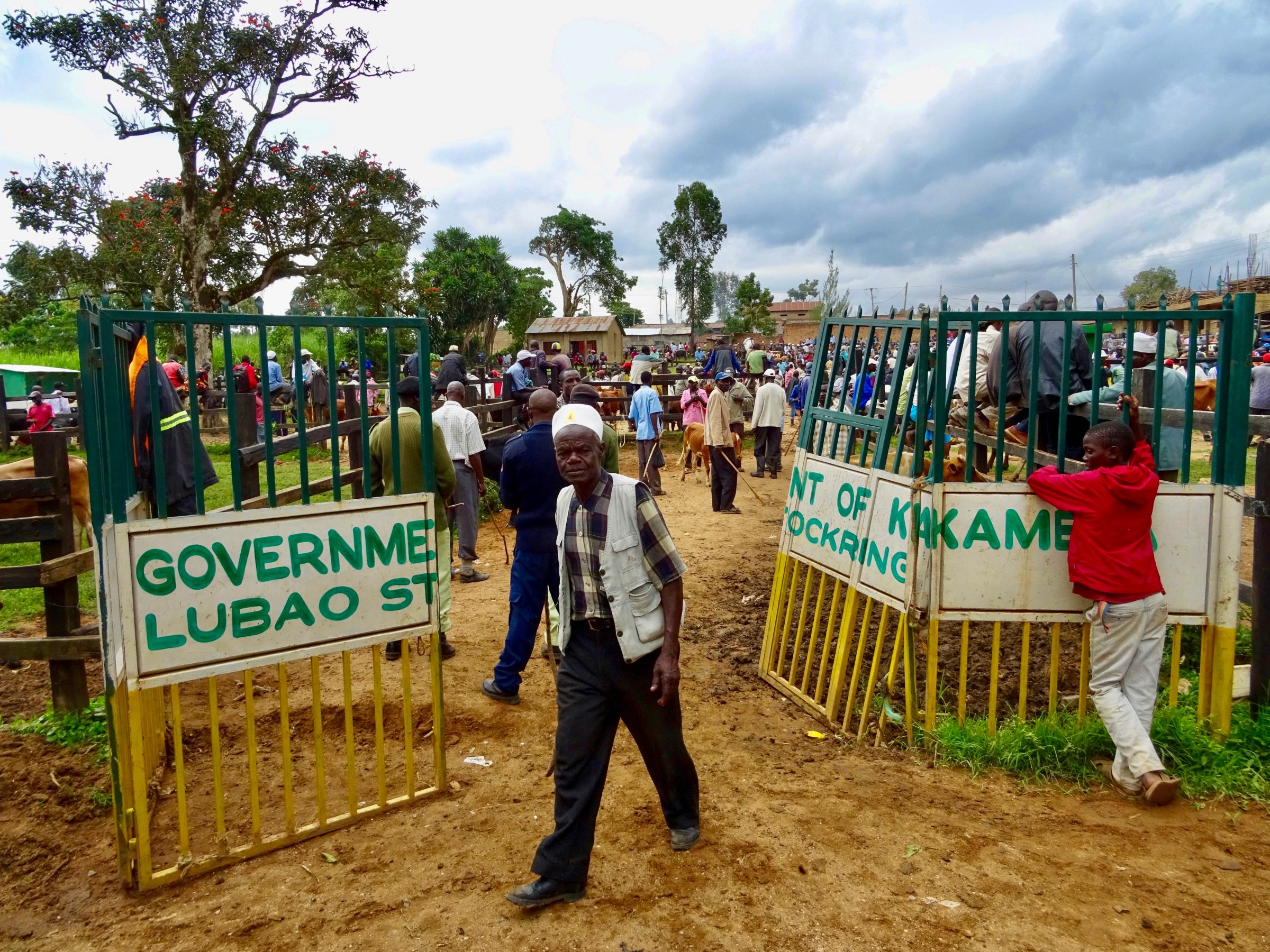
This is really fun. Merchants who feel the cows with sticks and shout out loud. I have no idea what exactly is being said, but every now and then I see a smile. Another cow sold.
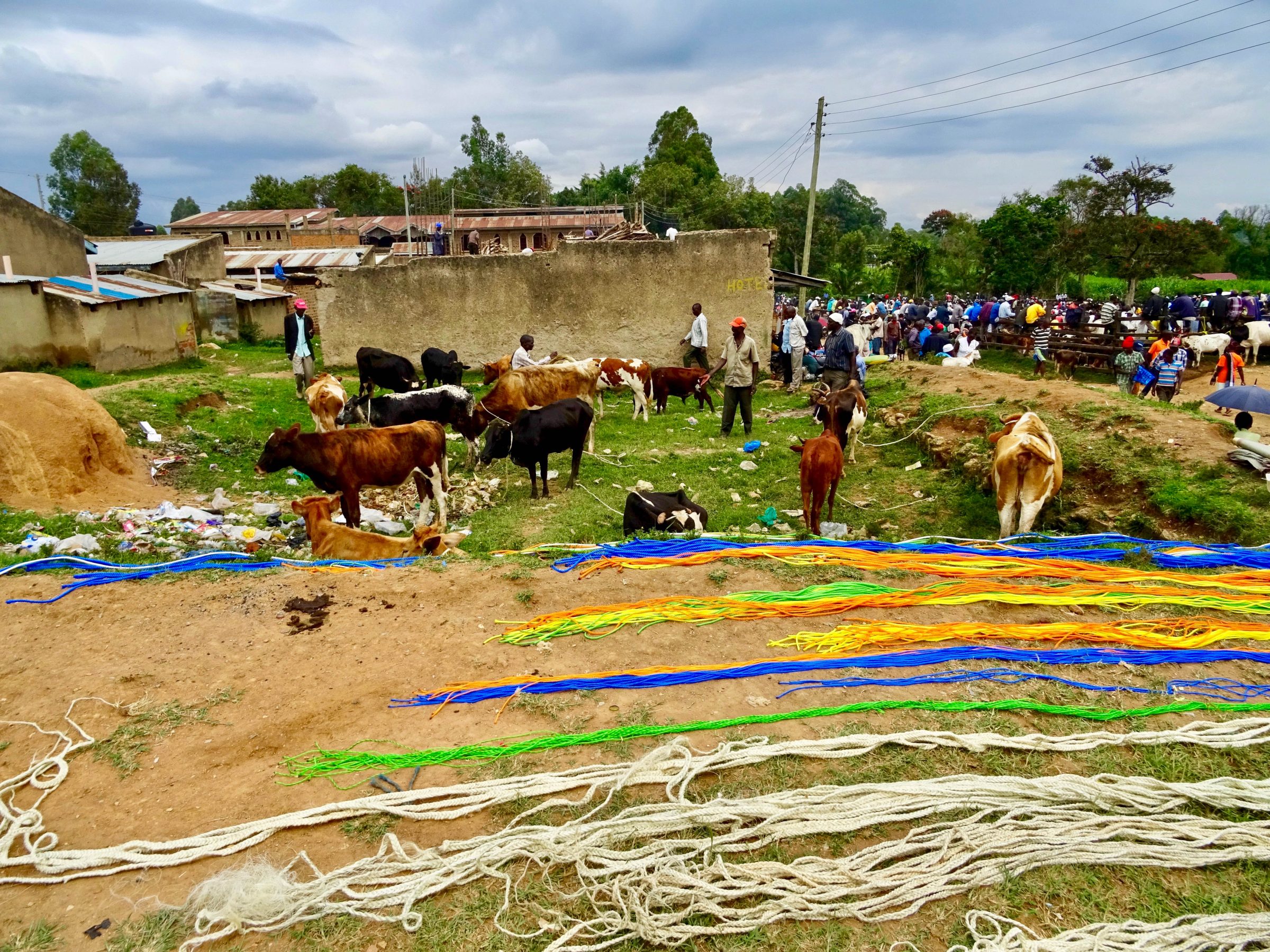
At the exit of the cattle market I look surprised at a couple of plastic cans full of blood. 'That is to make tasty sausage,' reports the saleswoman.
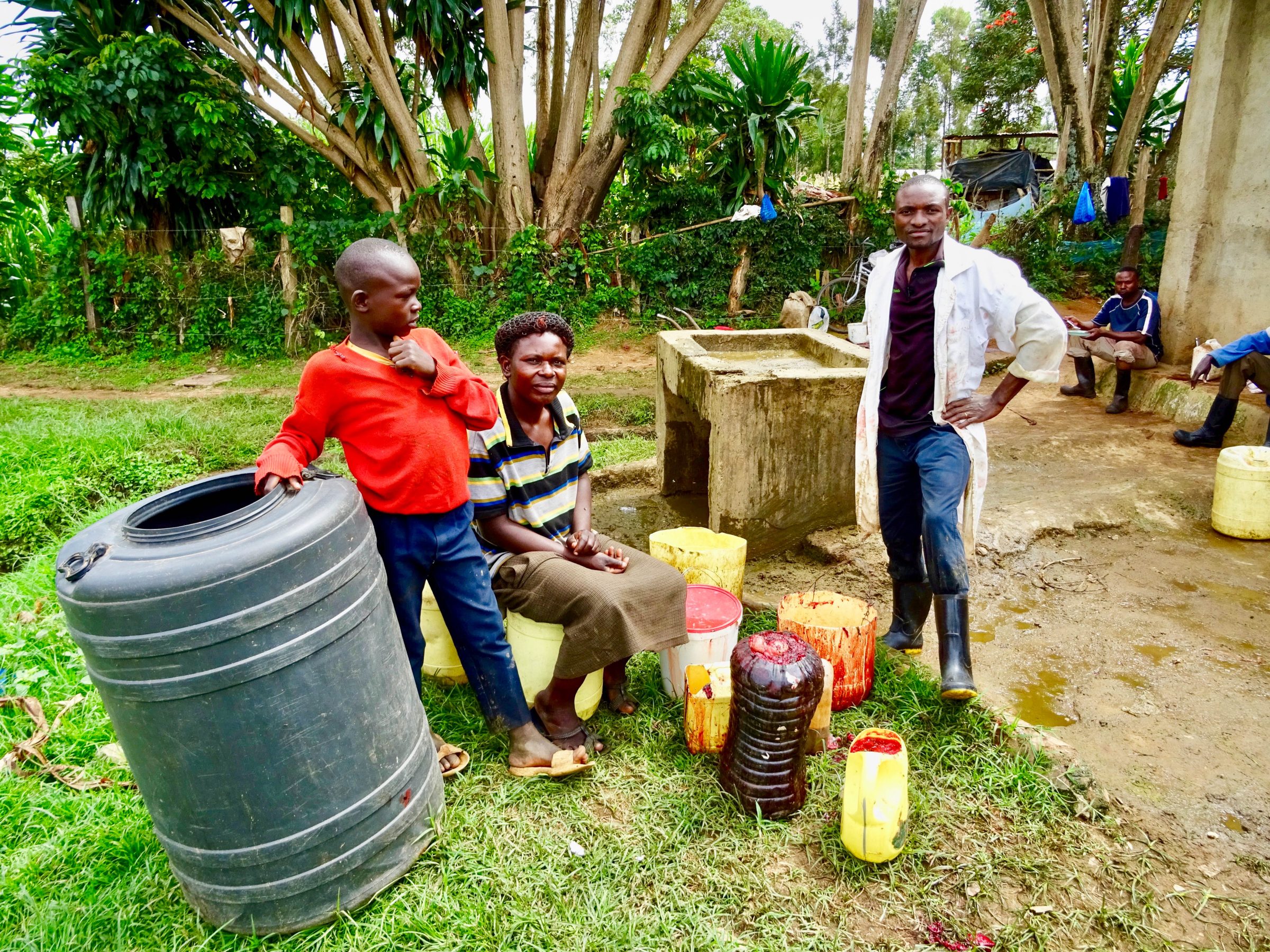
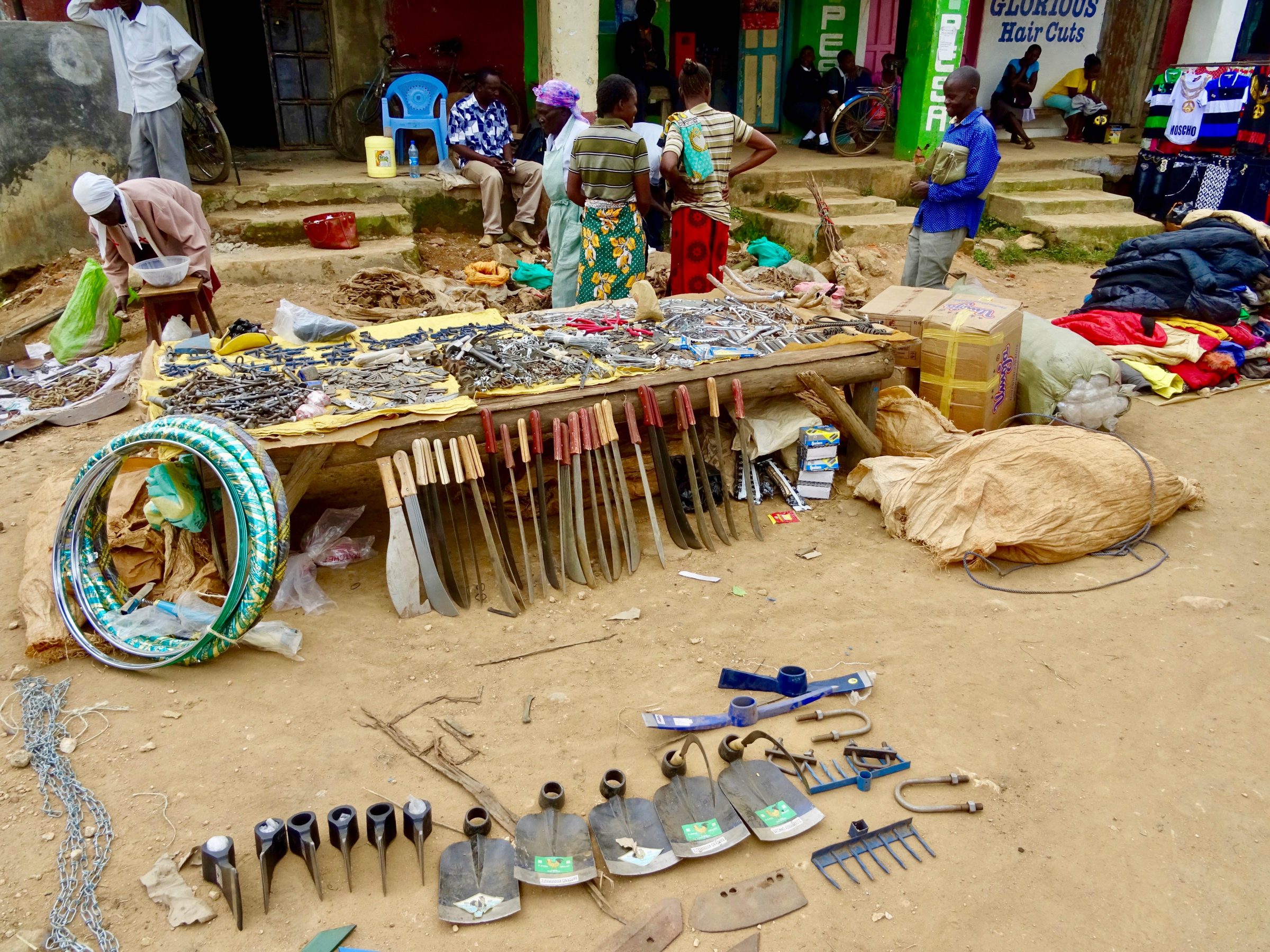
From Kisumu to Kericho
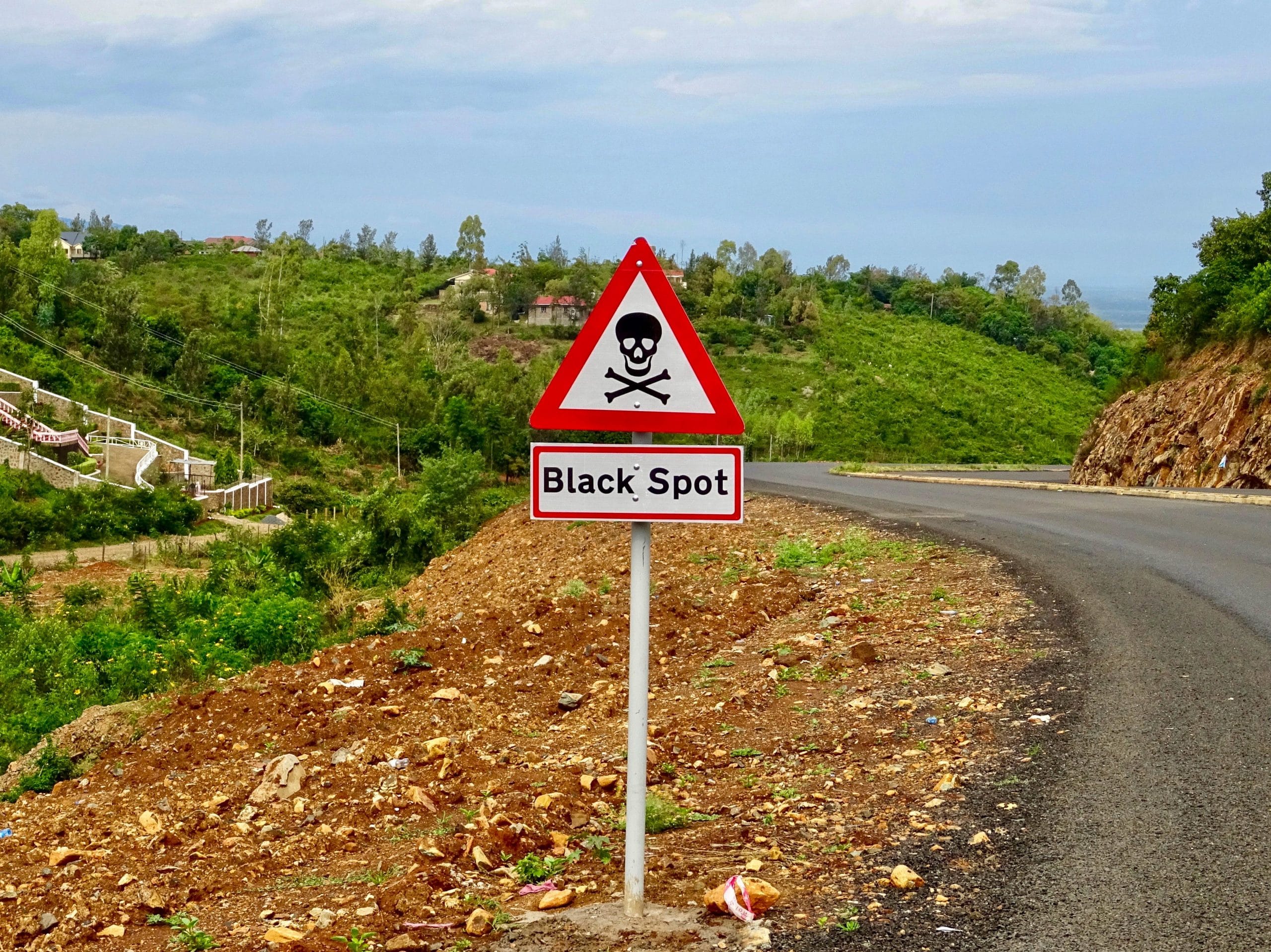
Around four o'clock I start the descent to the third city of Kenya: Kisumu. On a traffic sign, a hairpin bend is announced very sinisterly in the form of a skull, two bones and the words 'Black Spot'.
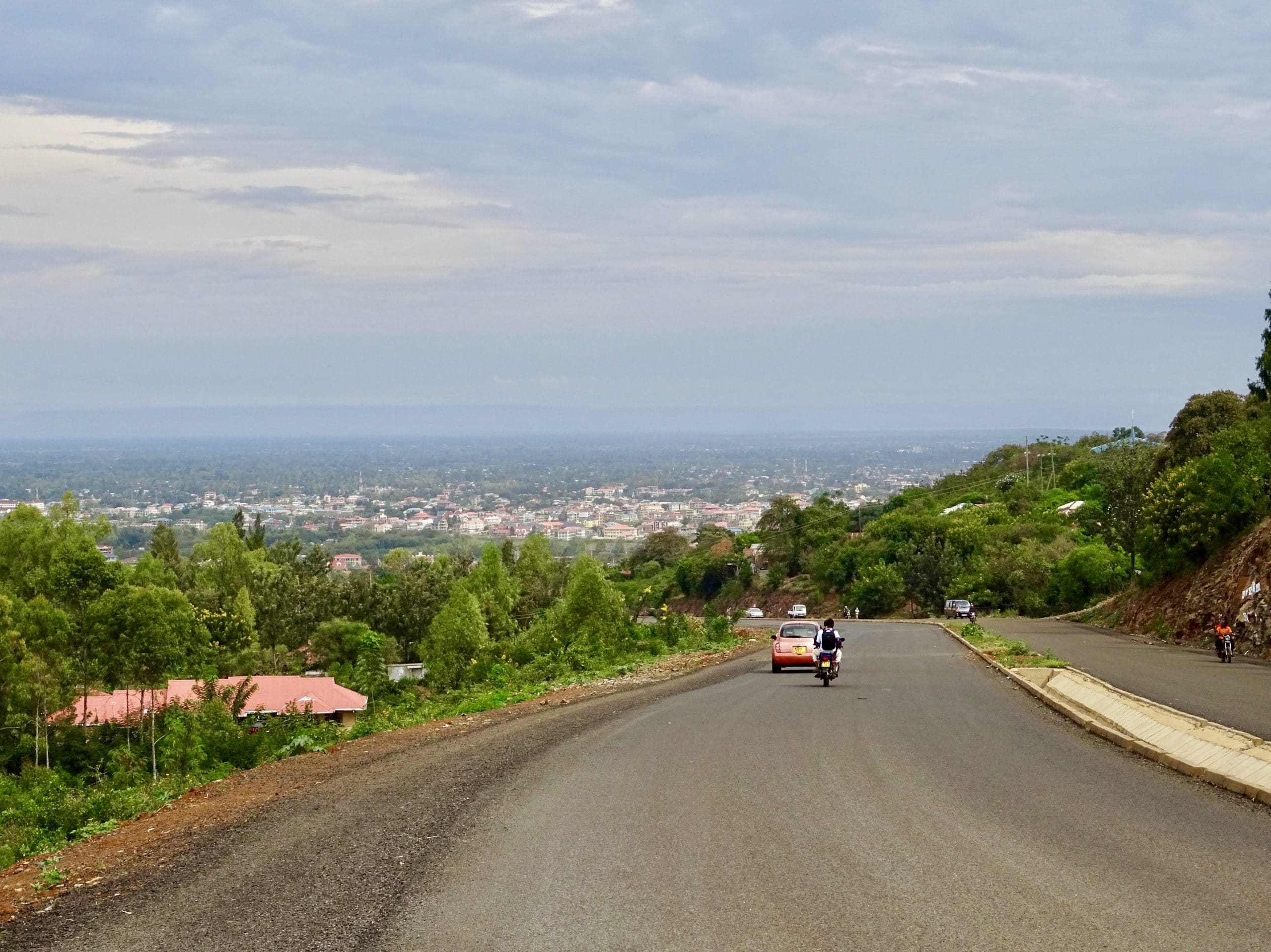
Two weeks after the elections in Kenya, Kisumu still seems to be very unsettled. Kisumu is the stronghold of the local favorite Odinga who is the main opponent of the incumbent President Kenyatta.
I avoid Kisumu, because I don't feel like getting into an accidental demonstration or anything like that. I circle deftly through the suburbs via the ring road. I stop for a portion of baked potatoes at a very nice cabbage and potato saleswoman.
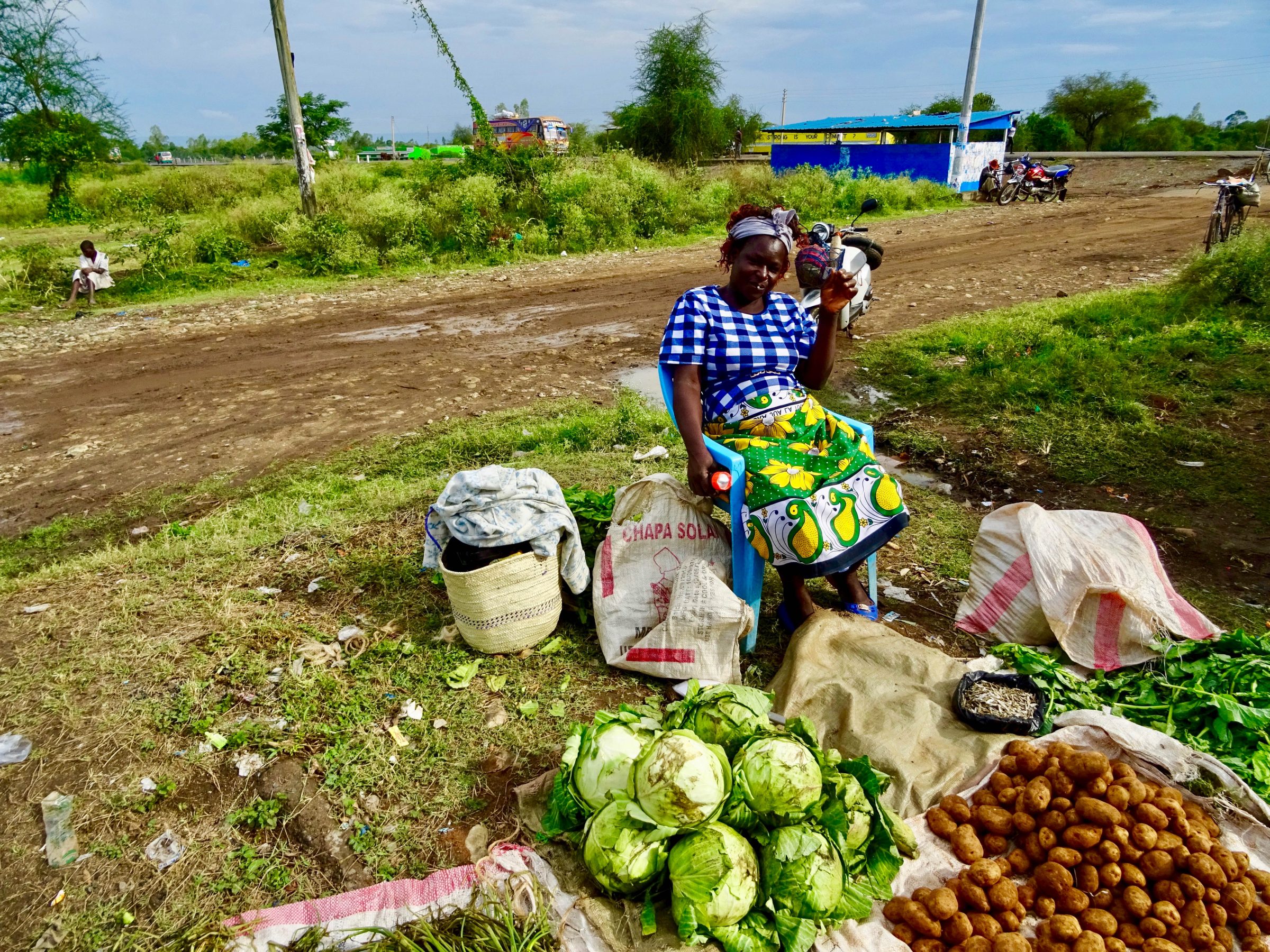
Arrival in the tea capital of the world: Kericho
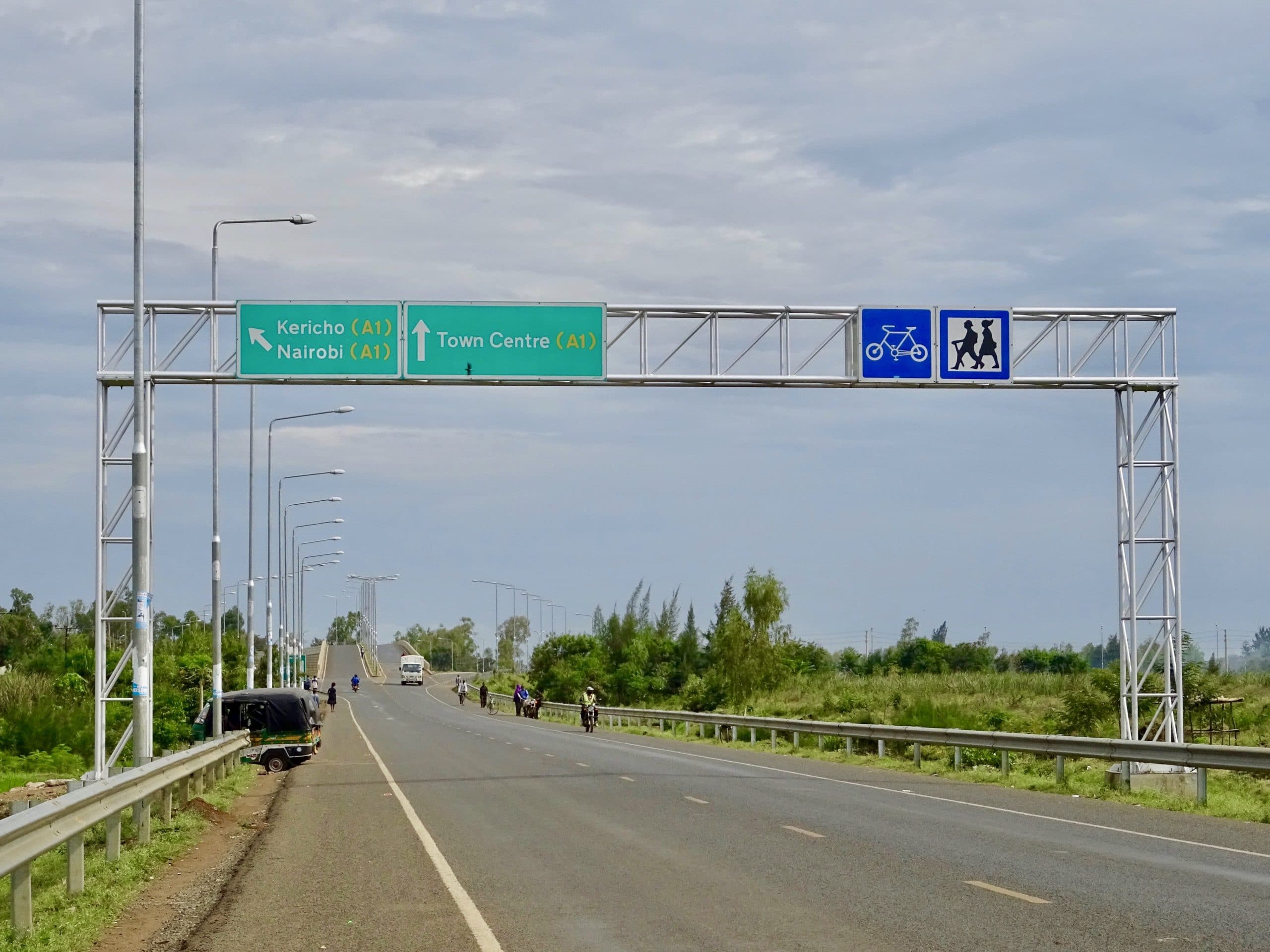
The hundred kilometers from Kisumu to Kericho go quickly. Despite the fact that I climb again to an altitude of 2.000 meters, my scooter has hardly any problems. There are no major ascent percentages. It looks a lot like the rolling hills of Rwanda. This is immediately linked. Just like in Rwanda, the area around Kericho consists mainly of tea plantations that stretch for miles.
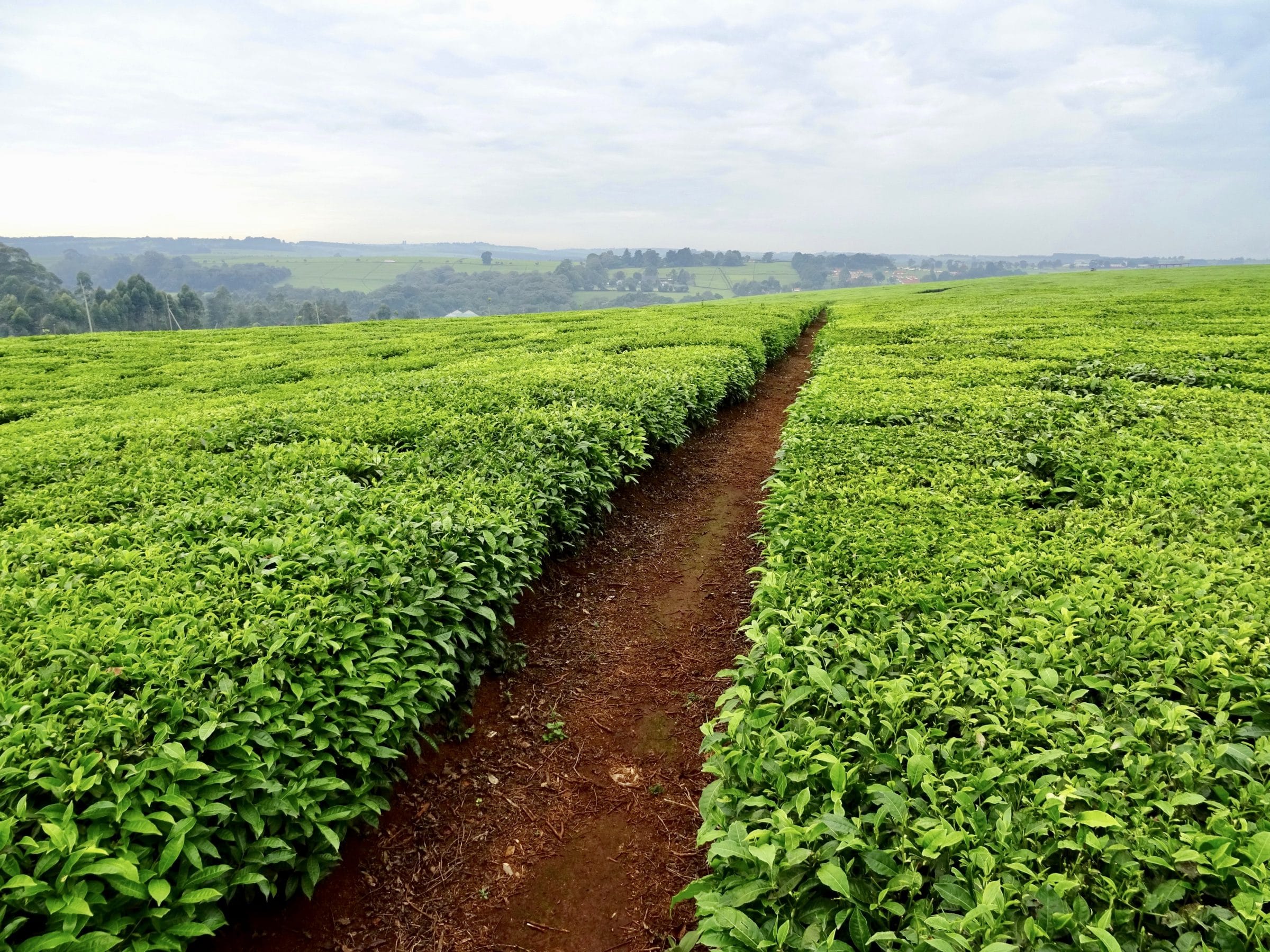
For over an hour I slowly roll up through the hills on my scooter. With tea plantations that reach to the end of the horizon and perhaps beyond.
I reach Kericho in the twilight. It strikes me how well the street lighting works. Kericho feels whole European at. According to a resident, this is because a lot of money is earned in Kericho. 'It is not for nothing that we are the tea capital of the world'.
Uganda has stolen our hearts more than once and as far as we are concerned it is a travel destination that belongs on the bucket list of every world traveler. Find out why Uganda is called the pearl of Africa.
A trip through Uganda will be one you will never forget. Spot the tree-climbing lions, meet thousands of elephants, come face to face with Mountain Gorillas in the jungle and get to know the beautiful culture.
Plan your holiday to Africa here
- Itineraries you can compare + request quotes Africaplus, Africa tailor-made, Djoser, king monkey, rickshaw travel, sawadee en shoestring.
- Flight tickets for Africa you book through Skyscanner.
- Hostels, Hotels and Resorts in Africa you book Booking.com.
- Rental cars : Sunnycars en rental cars.
- Tours and Activities in Africa you book through GetYourGuide.
- travel items such as suitcases, bags and more you can buy at Bol.com.
- SIM cards for Africa you buy extra International sim.
- Parking at the airport you can arrange via Parkos, park care of iParking.













